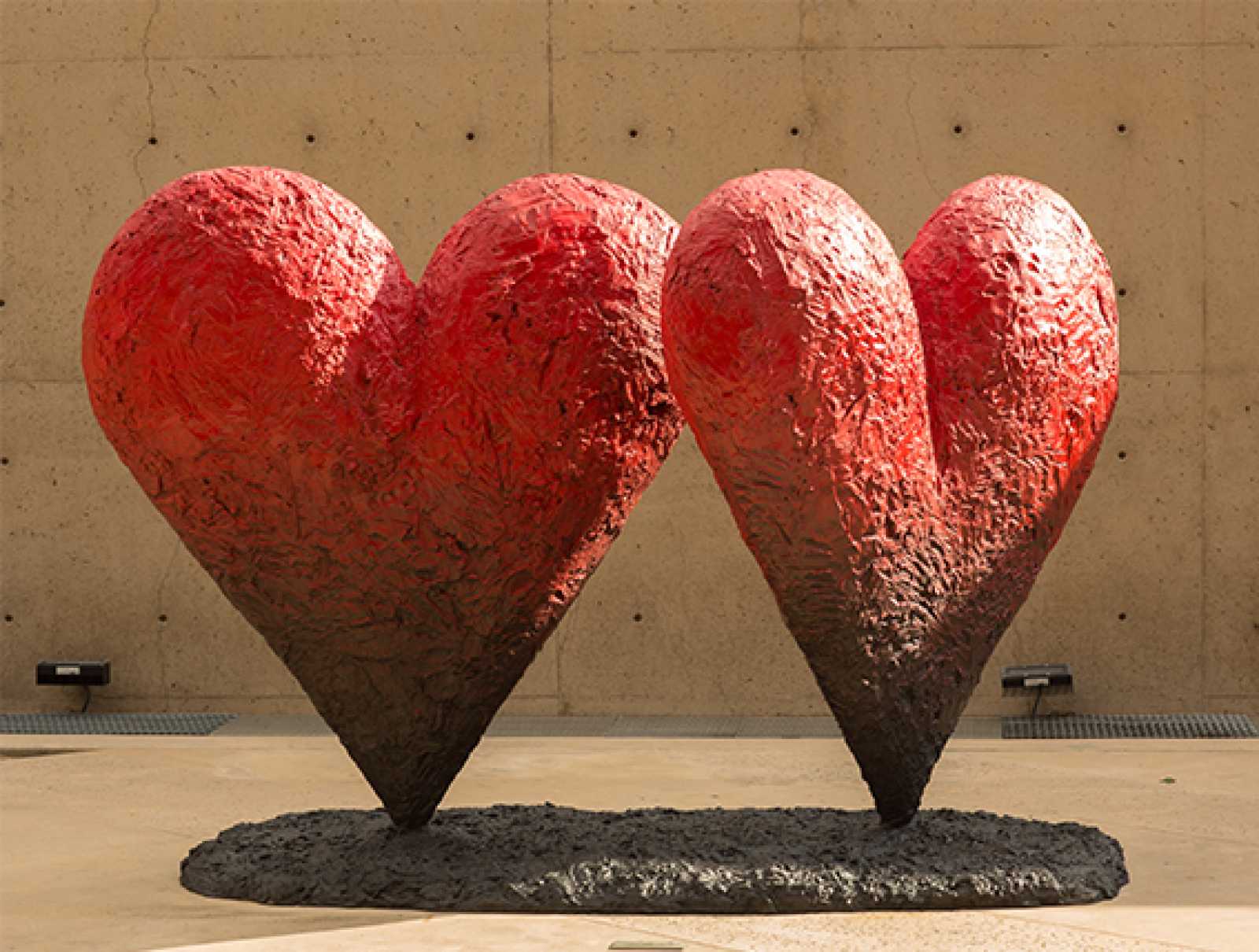Get Inspired by Jim Dine
Jim Dine (American, born 1935), Twin 6’ Hearts,1999-2002, patinated and painted bronze, 76 x 110 x 62 inches. Gift of Donna J. and Cargill MacMillan, 94-2008.
Repetition and Pop Art
Find everyday objects to inspire works of art, like the Pop Artists did in the 1950s and 1960s. Practice depicting one object repeatedly over the course of several days and explore different ways to represent the same image.
What is Pop Art?
Pop Artists moved away from the personal and emotional content of Abstract Expressionism by incorporating readymade and everyday imagery and techniques associated with mass production as the inspiration for their art. This included imagery and stylistic approaches found in popular culture, especially in magazines, television, and advertisements with their highly recognizable products and symbols. By using imagery and references from popular culture, the Pop Artists began to explore new ways of creating imagery that challenged traditional fine art and, in turn, made it more accessible to the public through its familiarity.
About the Artist
Artist Jim Dine is often considered a Pop Artist because of his subject matter associated with everyday life and familiar icons. He frequently works with the heart shape, a popular and recognizable form, which he has depicted in a multitude of ways.
Instructions
Supplies:
One object of your choosing
Drawing paper
Drawing supplies
Step 1
Select your object. When choosing your subject matter, consider items at home that you use every day, that are familiar and/or have personal meaning. Keep in mind you will be reproducing this object multiple times to consider different ways of drawing and depicting it, so you might want to start off with something simple that you like to look at.
Step 2
Place your chosen object in an area with good lighting, somewhere you can comfortably observe and draw it.
Step 3
With your drawing supplies, sketch the object.
Consider different ways to depict the same subject matter. This might range from realistic to abstract renderings. Something as simple as altering the color scheme or angle can change the way it appears. One day, you might want to draw your object realistically in color; on the next day you might choose to focus on its outlines, marks or shapes. Use your imagination and get creative!
Step 4
With fresh eyes on a different day or a few hours later, draw your object again. How many ways did you come up with to draw the same object?
Step 5
Drawing the same object several times can help you improve your drawing abilities. It can also help you practice your observational skills and allow for new ways of imaging. How did your series of drawings change over time?






